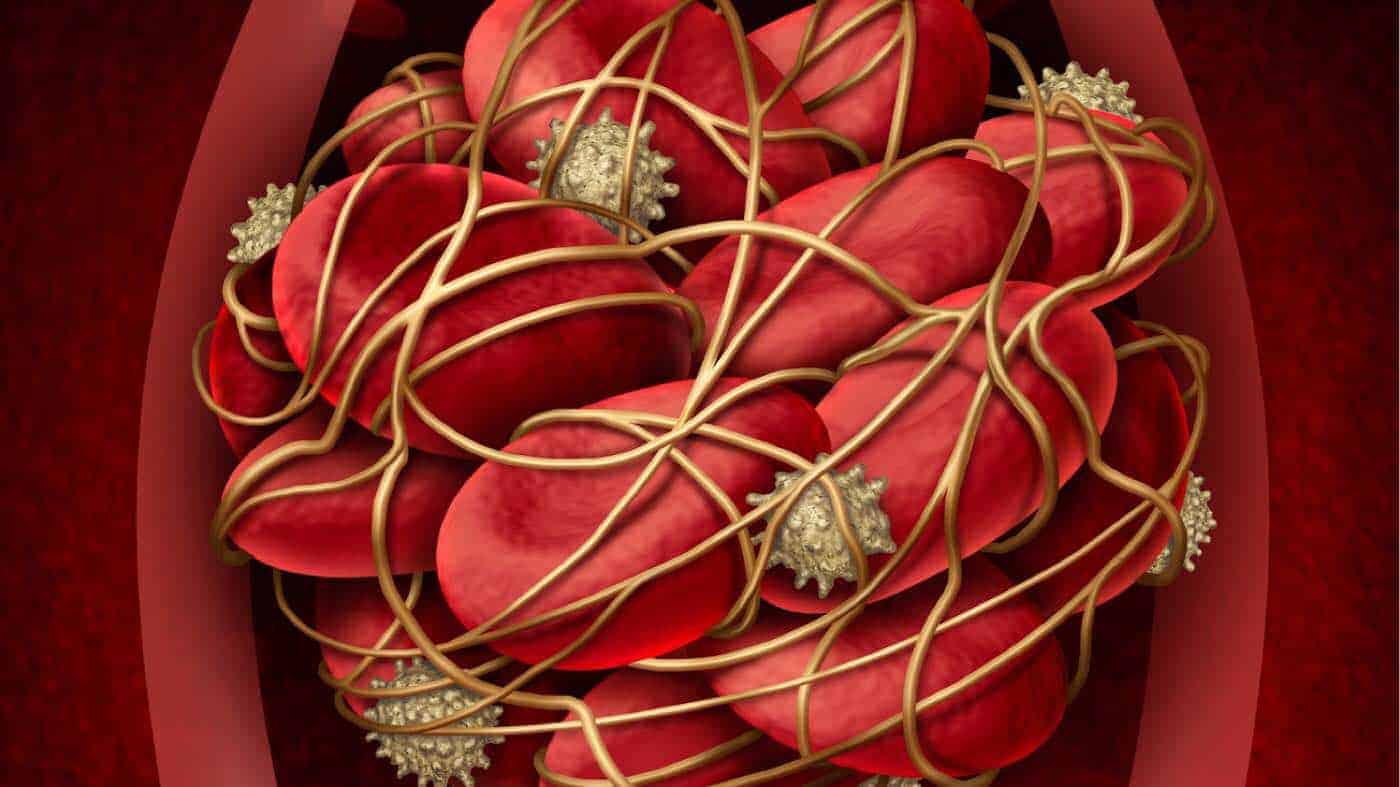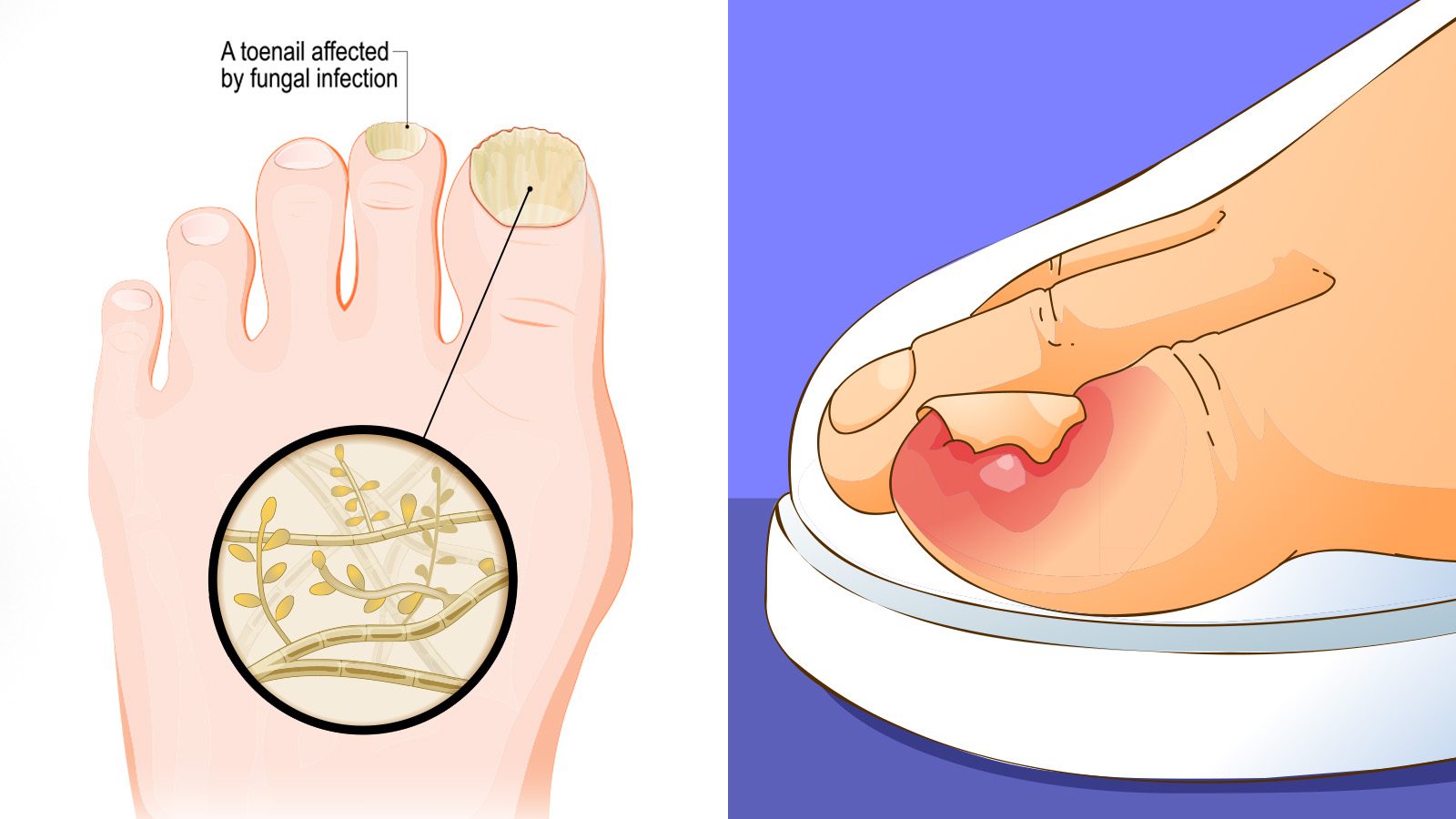Just like a scab that heals when you cut your finger, a blood clot is a mass of blood that is moving along your bloodstream. Clotting is normal for our blood because it is a natural part of the healing process. Unfortunately, when a blood clot happens inside your body, it can be dangerous.
According to the American Society for Hematology, these are a few risk factors for blood clots:
- Obesity
- Pregnancy
- Being sedentary for more than 4 hours (a long plane trip)
- Smoking
- Oral contraceptives (birth control pills)
- Cancers
- Injuries
- Certain surgeries
- Being over age 60
- A family history of blood clots
- Chronic inflammatory diseases (rheumatoid arthritis)
A blood clot that is being pumped along your veins can get stuck and block tissues in your legs, arms, or even your brain or other organs. This can cause those parts of your body to die from a loss of oxygen-rich blood slowly. Let’s look at eight warning signs you may have, when to seek medical attention, and what you can do to prevent it.
8 Signs You May Have A Blood Clot
1. Swelling
Just like a kink in a garden hose, it puts pressure on the vein behind the clot. This pressure can build and push outward, stretching the surrounding tissues. Swelling occurs most often in the legs.
2. Unexplained pain
In the chest, pain can feel like a weight resting on your chest rather than an intensely piercing pain. A feeling of pressure or a dull pain that accompanies other symptoms is a sign that you may have one.
3. Skin appearing blue or pale
The lack of blood supply from a blood clot is what makes your skin turn pale and then blue as the oxygen leaves the blood.
4. Sensation of warmth
A feeling of warmth is usually felt in the arms or legs. This may be accompanied by sweating or tenderness in the affected area.
5. Loss of feeling
Tingling or numbness in your legs or arms can be a sign. Since blood is cut off to the region by the clot, the blood is not able to circulate to the area. This is similar to how you feel when your hand falls asleep after you fall asleep with your wrist bent.
6. Headache with loss of vision or ability to speak
A blood clot in the brain is called an ischemic stroke. A headache is common enough that you shouldn’t worry if that is your only symptom. However, a clot in the brain can cause eye problems and may affect your ability to speak.
7. Vomiting and diarrhea with abdominal pain
With symptoms of vomiting, it could be food poisoning, or it could be a blood clot in your abdomen. An abdominal one can cause severe pain, unlike the dull pain with other types of clots.
8. Shortness of breath with pain
A blood clot in the lungs is called a pulmonary embolism or PE. The same symptoms may occur with one in the heart. Shortness of breath, feeling like you are unable to catch your breath, chest pain, racing pulse, sweating, fever, and coughing up blood are all signs of one in your lungs.
It is critical to seek medical attention quickly, especially with the symptoms of a blood clot in the brain, heart, abdomen or lungs. Your doctor can use a non-invasive ultrasound to check for any blood clots in your extremities and a blood test to check for the clotting factor in your blood.
Treatment for blood clots typically includes the use of medications to thin the blood and break up clots. Drug therapies and blood thinners such as aspirin, warfarin (Coumadin, Jantoven), dabigatran (Pradaxa), rivaroxaban (Xarelto), apixaban (Eliquis), and heparin can significantly decrease your risk of a serious blood clot.
This does not mean that you should take a non-prescription medication like aspirin to prevent a blood clot. Please seek counsel from your health care professional before taking aspirin as you may have other health complications that could be a concern when combined with a blood thinner.
Final Thoughts: You Can Act Now to Prevent Blood Clot
According to the Mayo Clinic, you can also take action to prevent these. They recommend:
-Avoid sitting for long periods. If you travel by airplane, walk the aisle periodically. For car trips, stop and walk around frequently.
-Move. After you’ve had surgery or been on bed rest, the sooner you move, the better.
-Change your lifestyle. Lose weight, lower high blood pressure, stop smoking, and exercise regularly.
Other ways to reduce your risk for this situation include increasing your intake of Omega-3 fatty acids with fish oil supplements. Omega-3s have numerous benefits, as you may have already read in our article This One Thing Will Help You Live Longer. Vitamin E and Evening Primrose oil are also anti-coagulants for the body, making blood less likely to clot.
Massage, exercise such as walking, and eating a healthy, low-fat diet that is high in healthy grains and vegetables will also keep your blood moving more easily. Garlic, onion, ginger, turmeric, ginkgo, bilberry, cayenne, and pepper are all excellent ingredients to add to your cooking to reduce the likelihood of blood clots.
















